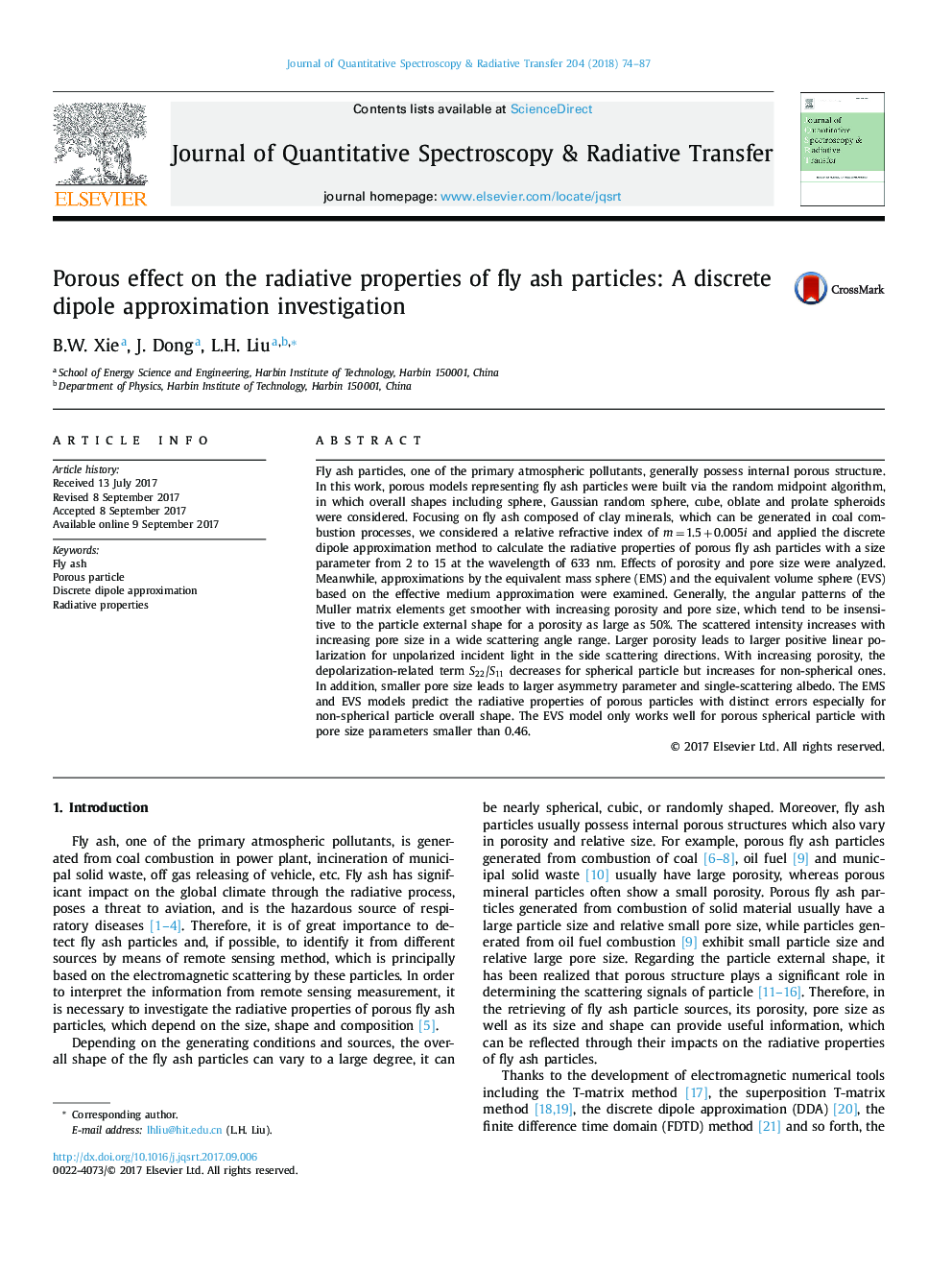| کد مقاله | کد نشریه | سال انتشار | مقاله انگلیسی | نسخه تمام متن |
|---|---|---|---|---|
| 5426996 | 1508611 | 2018 | 14 صفحه PDF | دانلود رایگان |
- Porous models exhibiting structural correlation are built that can precisely describe the porosity and pore size.
- Effect of porosity and pore size on the radiative properties are studied considering different external shapes.
- Similar porous effects on the radiative properties are found for porous particles of different external shapes.
- The Muller matrix elements tend to be insensitive to the particle external shape with large porosity.
- The simplified equivalent models fail to reproduce the radiative properties of porous particles.
Fly ash particles, one of the primary atmospheric pollutants, generally possess internal porous structure. In this work, porous models representing fly ash particles were built via the random midpoint algorithm, in which overall shapes including sphere, Gaussian random sphere, cube, oblate and prolate spheroids were considered. Focusing on fly ash composed of clay minerals, which can be generated in coal combustion processes, we considered a relative refractive index of mâ¯=â¯1.5â¯+â¯0.005i and applied the discrete dipole approximation method to calculate the radiative properties of porous fly ash particles with a size parameter from 2 to 15 at the wavelength of 633 nm. Effects of porosity and pore size were analyzed. Meanwhile, approximations by the equivalent mass sphere (EMS) and the equivalent volume sphere (EVS) based on the effective medium approximation were examined. Generally, the angular patterns of the Muller matrix elements get smoother with increasing porosity and pore size, which tend to be insensitive to the particle external shape for a porosity as large as 50%. The scattered intensity increases with increasing pore size in a wide scattering angle range. Larger porosity leads to larger positive linear polarization for unpolarized incident light in the side scattering directions. With increasing porosity, the depolarization-related term S22/S11 decreases for spherical particle but increases for non-spherical ones. In addition, smaller pore size leads to larger asymmetry parameter and single-scattering albedo. The EMS and EVS models predict the radiative properties of porous particles with distinct errors especially for non-spherical particle overall shape. The EVS model only works well for porous spherical particle with pore size parameters smaller than 0.46.
Journal: Journal of Quantitative Spectroscopy and Radiative Transfer - Volume 204, January 2018, Pages 74-87
